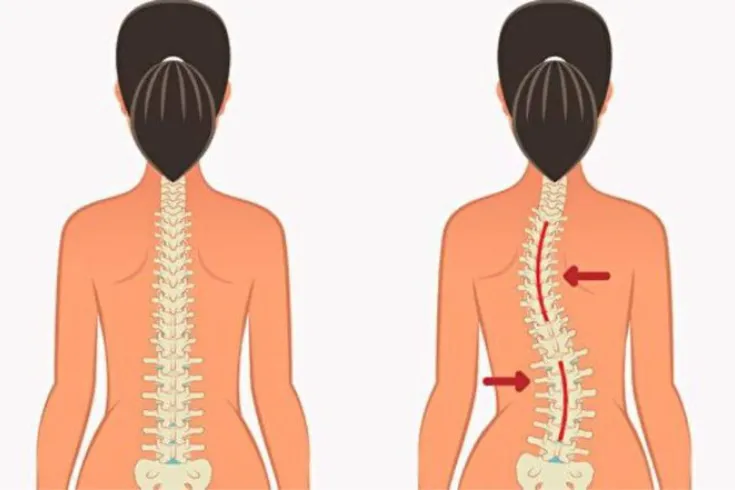Scoliosis Correction
Scoliosis is an abnormal, side-to-side curvature of the spine that can also involve rotation of the vertebrae, often appearing like a C or S shape. Symptoms can include uneven shoulders, waist, or hips, and a prominent rib cage on one side. Scoliosis correction involves non-surgical and surgical methods, with surgery recommended for severe curves.
Non-surgical options include bracing for growing children, physical therapy, and certain exercises. Surgical correction for adults and children often uses spinal fusion with rods, screws, and bone grafts to realign and fuse the vertebrae. Newer “fusionless” procedures like vertebral body tethering and growing rods are also available, especially for younger patients, allowing for some movement in the spine as the child grows.

Scoliosis Correction
Non-Surgical correction:
Physical therapy and exercise: For mild scoliosis, activities like swimming, cycling, and specific exercises can help strengthen core muscles and improve flexibility.
Bracing: Worn by growing children, braces can help halt the progression of the curve.
Pain management: Over-the-counter pain relievers or physical therapy may be used to manage pain.
Surgical correction:
Spinal fusion: Surgeons fuse two or more vertebrae together using bone grafts, metal rods, screws, or hooks to hold them straight while they heal. The fused area becomes one solid bone.
Vertebral body tethering (VBT): A less invasive option for growing children, this procedure involves placing screws along the spinal curve and attaching a strong cord through them. The cord is tightened to straighten the spine, and the spine may continue to straighten as the child grows.
Growing rods: For severe scoliosis in young children that progresses rapidly, surgeons can install one or two adjustable rods along the spine. These rods are lengthened periodically through minor procedures as the child grows.
Magnetically controlled growing rods:A newer technique where the rod is lengthened with an external magnetic controller, avoiding the need for repeated surgeries to lengthen the rod.
Anterior or anterior/posterior fusion: These variations of spinal fusion may be used in specific cases, with incisions made either from the front or back of the spine, or both.
Meet Our Doctor

Dr. Srinivasa Reddy
Accomplished Neurosurgeon
